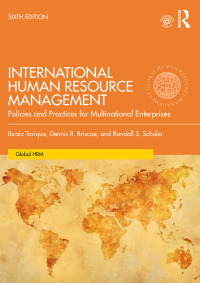Ford Motor Company has been in business for over 100 years (was incorporated in Delaware in 1919)
Question:
Ford Motor Company has been in business for over 100 years (was incorporated in Delaware in 1919) and when it comes to a global mindset, Ford is ahead of most of its competitors, although this was not always the case. In 2020, the company sold approximately 4,187,000 vehicles throughout the globe and it employs over 186,000 workers worldwide, has revenue over $127 billion, and operates in over 125 countries.
Early in its history, Ford was like many large firms, which often sent people off to other major countries to set up companies just like the one back home. The first Henry Ford, the founder of the Ford Motor Company, was in many ways an internationalist, because within a few years of establishing his company in the US, he was opening manufacturing and assembly plants all over the world – the fi rst of which was a Model T assembly plant in Trafford Park, England, in 1911 – that were essentially smaller versions of the original plant in Detroit. Over the years, Ford evolved into a collection of local country and regional fiefdoms.
But by the mid-1920s (even earlier in some countries), a sense of local pride had developed in the Ford plants in many countries around the world. These countries all began to develop their own automotive companies. Suddenly there were local automotive companies in the UK, France, Germany, and Australia – all making their own vehicles. Nations wanted to assert their independence and saw the automotive industry as a means of investing in their own economies. Indeed, some early automotive pioneers in other countries even began to export their own cars to other countries as well as develop their own plants elsewhere. The Europeans exported, the Americans exported, and the Japanese exported – that was the way the competitive game was being played. This was the beginnings of the “multidomestic” structure for large multinational corporations, as described.
In the 1960s, though, regionalism began to develop with the emergence of the European Common Market, NAFTA, ASEAN, and other regional trading groups. Countries kept their own political systems and social values but formed economic trading blocs. So, big companies established regional headquarters within the various major trading blocs. Ford Europe, Ford Asia-Pacific, and Ford South America were established in this period. This was when most of the regional and functional fiefdoms (with each region becoming very independent) became firmly entrenched at Ford. (This is what is referred to in the text as the “regional” corporate structure, an extension of the “multidomestic” structure.) The fiefdoms were excellent at what they did:
they squeezed every last ounce of efficiency out of the regional model. For example, back in the period of nationalism, Ford had multiple accounting activities around the world – there were 15 in Europe alone. The regional model got it down to four: one in Europe, one in the US, one in Asia-Pacific, and one in South America. But even with that efficiency, Ford felt that the model didn’t work anymore..........
Case study questions
1. What are some of the reasons that HRM tends to develop at the local level in the international expansion of firms like Ford Motor Co.?
2. Are there other alternatives?
3. What HR issues arise when a firm like Ford moves to a regional and then a global or transnational structure?
Step by Step Answer:

International Human Resource Management Policies And Practices For Multinational Enterprises
ISBN: 9781138489493,9780429806124
6th Edition
Authors: Ibraiz Tarique , Dennis R. Briscoe , Randall S. Schuler





